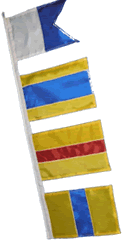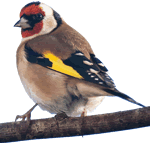Here’s a recording in a mystery language.
Can you identify the language, and do you know where it’s spoken?
Here’s a recording in a mystery language.
Can you identify the language, and do you know where it’s spoken?
This sentence in Judeo-Arabic was sent in by a visitor to Omniglot who would like to know what it means.
האדא כלאמהום. אלדי יגאוובון עלא האדה מסלכהום. ומא ענדנא גוואב נגרח להאדא גוואבהום
Can you help?
I put it into Google translate and got this transliteration: Hada Achlamhum. Baldi Igaauubon Ala Shahada Msllachhum. Ma Endana Agovab Ngerah Lhada Agovabhum.
At the community choir last night our conductor referred to part of a song we were practising as a vamp. I have heard this term before in the context of songs, but wasn’t entirely sure what it meant, so decided to find out.
According to the OED, vamp (/væmp/) has a number of meanings, including:
1. That part of hose or stockings which covers the foot and ankle; also, a short stocking, a sock.
2. The part of a boot or shoe covering the front of the foot; U.S., that part between the sole and the top in front of the ankle-seams.
3. Anything vamped, patched up, or refurbished; a patchwork; a book of this nature.
4. A vamped or improvised accompaniment.
Etymology: from the Anglo-Norman *vampé / *vanpé, from the Old French avanpié, which later became avantpied – a combination of avan(t) (before) and pié foot.
None of these definitions entirely fit what we were singing last night – a short repeated phrase at the end of a song.
According to Wikipedia, a vamp is “a repeating musical figure, section or accompaniment” that’s used mainly in jazz, gospel, soul, and musical theatre, and also in other types of music. Vamp can also mean “to improvise simple accompaniment or variation of a tune”.
The equivalent of vamp in classical music is ostinato, the Italian word for ‘stubborn’. A related term is riff, which is perhaps an abbreviation of refrain and refers to a repeated chord progression, pattern, refrain or melodic figure, and is used mainly in rock, funk, jazz and Latin music.
A kitten’s growl would not come near the plights of your spoken voice.
You are a banana moon subverting the sun.
Your ear-splitting sequels have a mind of their own.
Demonize your sofa. It will lend forth more peanuts between the cushions.
The tiny sounds of ancient bees resound forth from the forrested coercions between your toes.
The above sentences were generated by the The Surrealist Compliment Generator. They look a bit like things that emerged from a game some friends and I devised involving going around the group saying one word each and trying to connect the words into sentences.
The SCG also throws up surrealist compliments in other languages occasionally. For example:
– Mano a mano, le tue ossiflexe, si starnubbano nel brondio.
– Votre regard est plus penetrant qu’une stalagmite sertie dans son antre d’albatre
– Heizenmizstenwerner ut mal die westernmoviefurter und glipzenglagenheimer zieden un der witzelwaltzerfloggen…
Coming up with surrealist sentences like this in languages you’re learning could be a fun way to practise using them.
The OED defines surrealism as:
“A movement in art and literature seeking to express the subconscious mind by any of a number of different techniques, including the irrational juxtaposition of realistic images, the creation of mysterious symbols, and automatism; art or literature produced by or reminiscent of this movement.”
The word surrealism comes from the French surréalisme, which was coined by Guillaume Apollinaire in 1917.
Here’s a recording in a mystery language.
Can you identify the language, and do you know where it’s spoken?

When any swashes they can find have been thoroughly buckled, or indeed buckles swashed, swashbucklers might hear the exclamation/order ‘splice the mainbrace!’. I’ve often wondered what a mainbrace was and how you would splice one. So I decided to find out.
It turns out that nowadays the order ‘splice the mainbrace’ has nothing to do with the splicing of braces, main or otherwise, but is in fact an order to issue the crew of a navel vessel with an extra ration of rum or grog.
Originally the order referred to the repairing of the mainbrace, the largest of the lines or ropes that control the angle of the yards on a sailing ship. This was a difficult but essential task, as a ship could not be steered without a mainbrace, which was a prime target during battles, and it was customary for an extra ration of rum to be issued after the mainbrace had been successfully spliced. The order continued to be used after sailing ships were no longer used, but referred just to the extra rum ration rather than to the actual mainbrace splicing, and tended to be made after after victory in battle, or on the occasion of a change of a monarch, a royal birth or wedding, or an inspection of the fleet. [source]
The flags on the right are the maritime signal flags for the order ‘splice the mainbrace’.
The word splice, meaning ‘to join (ropes, cables, lines, etc.) by untwisting and interweaving the strands of the ends so as to form one continuous length’ comes from the Middle Dutch word splissen, the origins of which are uncertain [source].
In one of the books I read recently quite a few swashes were buckled, and this got me wondering what exactly was a swash and who you would go about buckling one.
A swashbuckler (/ˈswɒʃˌbʌklə(r)/) is a swaggering bravo or ruffian, or a noisy braggadocio, and first appeared in writing in 1560, according to the OED. It is a combination of two words, swash and buckler:
swash, v. /swɒʃ/
– to dash or cast violently.
– to make a noise as of swords clashing or of a sword beating on a shield; to fence with swords; to bluster with or as with weapons; to lash out; hence, to swagger.
– to dash or splash (water) about; to dash water upon, souse with water or liquid; (of water) to beat with a splash against.
Etymology: imitative of the sound of splashing or agitated water, or of a resounding blow
[source]
buckler, n. /ˈbʌklə(r)/
– a small round shield
– a means of defence; protection, protector.
Etymology: from the Old French boucler, bucler, from the Latin *bucculārius (having a boss) from buccula (visor).
[source].
So now we know. Are there interesting equivalents of swashbuckler in other languages?

Lasair choille or ‘flame of the woods’ is the Irish name for the goldfinch (carduelis carduelis), two of which I saw on my apple tree this morning. I like to know the names of birds and other creatures in the my languages, and particularly liked the Irish version when I discovered it.
The Irish word lasair means flame or blame comes from las (to light, inflame, ignite, blush). It probably shares the same root as the English word lamp, which comes from the French word lampe, from the Latin lampas, from the Greek λαμπάς (to shine).
In Welsh the goldfinch is known as nico, but has many other names, including jac nico, teiliwr llundain (London tailor), peneuryn (head gold jewel?), eurbinc (gold pink), pobliw (every colour), soldiwr bach y werddon (little soldier of the green place/oasis), cnot, ysnoden felen (yellow band) and asgell aur (gold wing).
The English word finch comes from the Old English finc, possibly from the Old Germanic *finki-z or finkjon, which is thought to be of echoic origin.
Names for the goldfinch in many other languages can be found on the avibase.
Here’s a recording in a mystery language.
Can you identify the language, and do you know where it’s spoken?